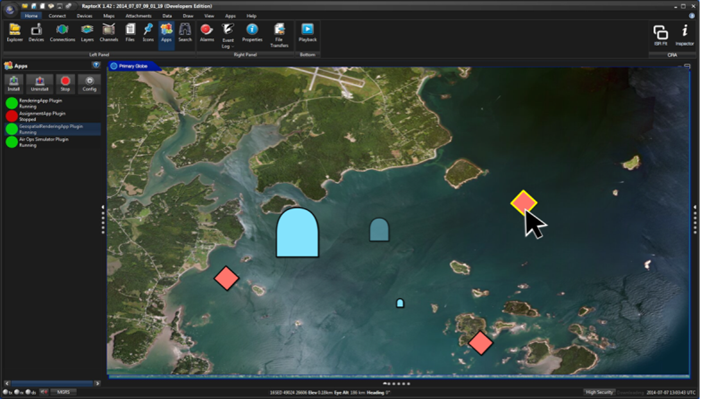The Situation
Operators of unmanned systems face numerous challenges responding to evolving mission needs or changes in the environment, such as dynamic weather patterns, traffic in congested air or sea spaces, or pop-up threats. Frequent vehicle path re-planning and re-tasking tasks often generate a significant cognitive load and introduce risk for control error. Although significant advances have taken place in low-level automation to relieve some of this workload, human supervisory controllers still take on much of this responsibility in highly dynamic environments.
The Charles River Analytics Solution
Scientists and software engineers at Charles River Analytics created Advanced Mission Planning Tools, or AMPT, which is a mission monitoring and decision aiding visualization framework to support unmanned system operators. We analyzed operations to understand current roles, tasks, and responsibilities and developed a representative concept of operations. We also developed an initial application consisting of a collection of component views to support complex decisions and challenging tasks. These decision-support interfaces use simple visual structures to convey complex behavior-shaping events and operational constraints. AMPT allows operators to intuitively perceive system status, identify response requirements, and efficiently direct automated planning tools.

AMPT Application: recommending vehicle assignment options to pop up targeting
The Benefit
Through feedback from representative users as well as technical discussions with transition targets, the AMPT application is positioned to have direct impact on current and future unmanned operations. In addition to reducing workload, AMPT’s intuitive display and control interfaces will also reduce training requirements for unmanned systems operators. AMPT also features a set of novel temporal, spatial, and relational display components that could help warfighters across other domains by improving situational awareness, understanding, and decision making.
This material is based upon work supported by the NAVAIR under Contract No. N68335-13-C-0408. Any opinions, findings and conclusions or recommendations expressed in this material are those of the author(s) and do not necessarily reflect the views of NAVAIR.
